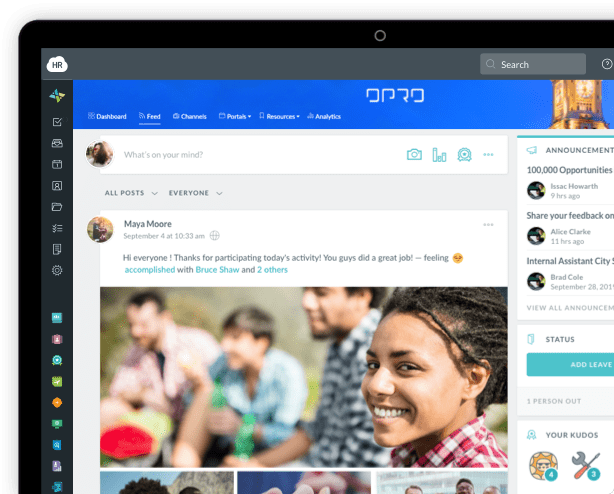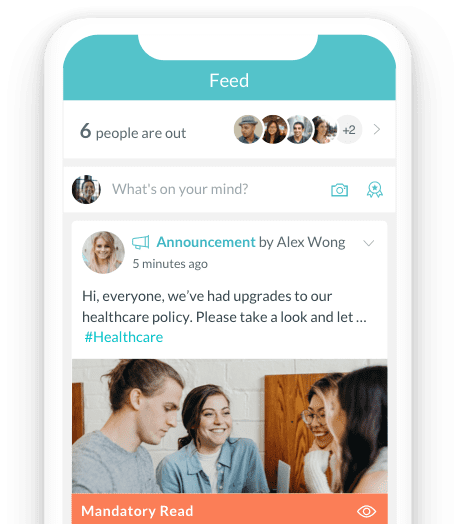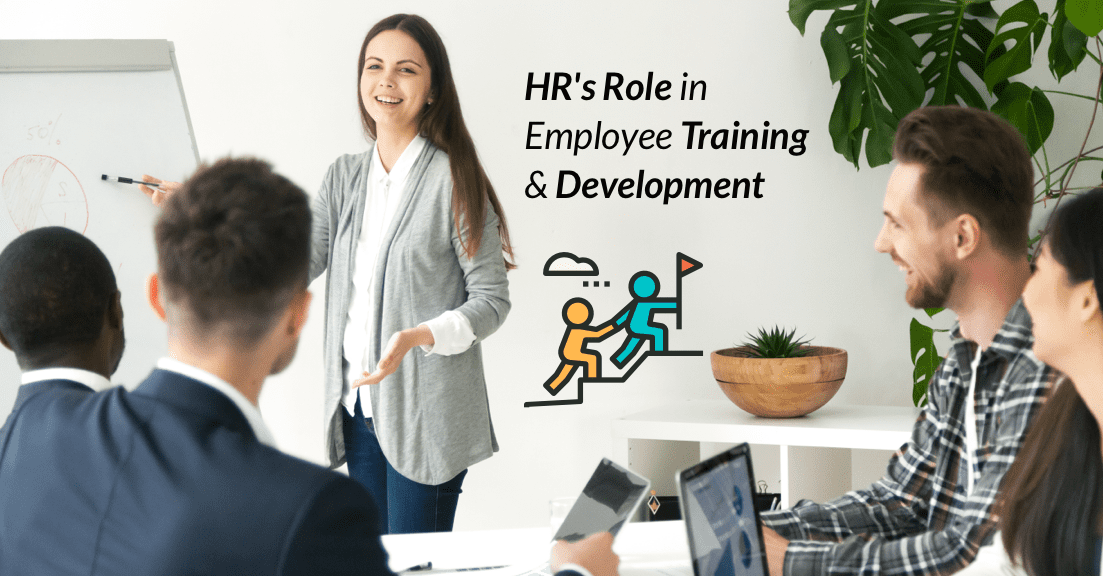- Five Ways HR Plays a Role in Employee Training & Development
- Make Sure All Training Materials Are Provided
- Facilitate Meetings Between Company Leaders and Employees
- Help Employees Apply for Open Positions Within the Company
- Keep up With Training & Development Trends
- Encourage the use of employee development plans
- The Value of having HR Involved in Employee Training & Development
Highly engaged employees are usually the most productive, positive, dedicated ones. They’re willing to go above and beyond their job expectations and immerse themselves in achieving company goals. They also display deep loyalty to the companies they work for so long as they’re being provided what they need to be happy at the workplace.
One of those workplace needs revolves around being challenged and nurtured into the highest version of self. The top talent in your industry is primarily attracted to employee development and training initiatives. They’re insistent about adding value to their respective roles and the company culture by constantly growing personally and professionally.
Let’s explore your role in facilitating employee development and training and why your involvement in these aspects is valuable.
Five Ways HR Plays a Role in Employee Training & Development
A survey found that “only 29% of employees are ‘very satisfied’ with their available career advancement opportunities. 41% marked those opportunities as ‘very important’ when it comes to job satisfaction, engagement, motivation, and employee retention.”
This means that the right opportunities for career growth can keep employees at your company longer, motivate them to perform at a high level, productively engage them, and keep them satisfied with their role.
Here are five ways you can deepen your influence in employee training and development.
Make sure all training materials are provided
Not having what you need to complete training can take the air right out of the development balloon. One way to positively influence employee training and development is to ensure that everyone receives the training materials they need on time.
For example, if your company uses virtual or e-learning services for its training or development activities, make sure that your employees are briefed on how to use these services responsibly. Give them information on browser security, privacy measures, and how to use the system. You could also make sure their training schedule is set and that they have a quiet workspace to ensure a productive e-learning training experience.
Audit your training materials. Make sure they’re the most current and safely discard those that aren’t. You could also make sure any software, technology, or services used for training is up to date and in top condition. Be wary of certification dumps and ensure all training materials are legitimate and up-to-date. Keep track of everyone who is training and check in with them throughout the process to make sure they have everything they need.

Facilitate meetings between company leaders and employees
HR professionals are often labeled as the bridge between leaders and workers. It’s not often that company leaders interact with those on the frontline of their companies and vice versa. But for training and development to be successful, company leaders and employees need to work together.
You should be scheduling and facilitating regular meetings between company leaders and employees. These meetings could be between managers and workers, CEOs and managers, even shareholders and top-performing employees. It’s highly beneficial for company leaders to hear what employees need in training and development straight from their mouths.
You may not be asked to lead or attend the meeting, but ensure you’re reaching out to company leaders to connect with employees on the frontlines. Offer to set up these meetings, send out emails regarding the request for them, or take notes on behalf of an attendee. Ensure you’re also responding promptly to company leaders that reach out to you with requests for information.
Help employees apply for open positions within the company
When an employee expresses interest in moving up in the company, it’s best to work with them immediately. This helps ensure they don’t look elsewhere for a higher position or feel devalued because they didn’t receive any guidance on moving forward with this request. Be intentional about helping employees apply for open jobs within the company.
Not all employees express their interest in moving up in a company out loud. But for the ones that do, you can work with their managers to see how to best support them in their next steps. This could mean sending them information on what to do if they’re applying for a position internally and how to fill out an application as an existing employee.
It could also mean offering any resources on bettering their resume by effectively showcasing the hard, soft, and transferable skills learned through their current position. Any classes, resources, or events on how to write a cover letter or brush up on interview skills would be suitable to share as well.
Keep up with training & development trends
Each business owner, manager, employee, and so on have their unique strategies for successful employee training and development. We’re able to draw from a massive pool of thoughts, methods, techniques, and plans that influence training and development. Because workplace culture is changing so rapidly, it’s essential to keep up with training and development trends.
For example, one trend that’s surfaced is personalizing the training and development process to each employee. Personalizing the training process is highly dependent on understanding the way each employee learns. Whether they’re self-directed learners who would instead plan, carry out, and evaluate their learning experiences or experiential learners who lean on their own experiences to understand the information at hand, you should construct an individualized training program based on this information.
Ensure that you’re using all of your platforms to stay engaged with training and development trends. When new concepts, programs, or solutions are introduced that could better your company’s efforts, share them with leadership and push to explore them fully.
Encourage the use of employee development plans
We’re getting further and further away from the days of training in groups and offering employees “one-size-fits-all” development methods. Each employee has their individual career goals, thoughts on where they feel they can make the best impact, strengths, weaknesses, and potential. Creating a detailed employee development plan can honor the individuality in your workforce.
An overall professional development plan that details how your company is committed to providing opportunities that meet your employees’ aspirations, long-term strategy, growth goals, and leadership training is essential. Using employee-specific development plans is an excellent strategy to ensure each person is being supported based on their individual needs.
If employee development plans aren’t being used in your company, encourage leaders to begin implementing them. If they are being used, ensure that managers and employees create them together and follow along with steps laid out. Ensure you also can explain your company’s overall commitment to nurturing employees to new levels in their careers.
The Value of having HR Involved in Employee Training & Development
This world gives us no constants except change. So, you need employees who are passionate about growing professionally and personally if you don’t want to risk falling behind your competitors or getting out of touch with your clients’ needs. HR professionals give employees the support, resources, and guidance necessary for advancement.
Productivity gets better when employees are challenged and find new ways of excelling in their positions. They’re more engaged with their roles, coworkers, and managers, which influences the overall company culture. When you’re involved in employee training and development, you’re deepening your commitment to company longevity.
Nurturing and developing top talent is so crucial to company longevity. So, keep on top of training materials, bridge the communication gap between employees and company leaders, and help employees apply for internal advancement opportunities. You’ll also want to keep up with training and development trends and encourage employee development plans to ensure your as involved as you can be.
About Author: This article is written by a marketing team member at HR Cloud. HR Cloud is a leading provider of proven HR solutions, including recruiting, onboarding, employee communications & engagement, and rewards & recognition. Our user-friendly software increases employee productivity, delivers time and cost savings, and minimizes compliance risk.

Keep Reading
Retention Reset: How to Keep Your Best Talent in 2025
More employees are walking away from their jobs in 2025 not just for better pay, but for
Remote Onboarding Done Right: A Step-by-Step Guide for HR Teams
Remote onboarding is the process of welcoming new employees who work from home or



